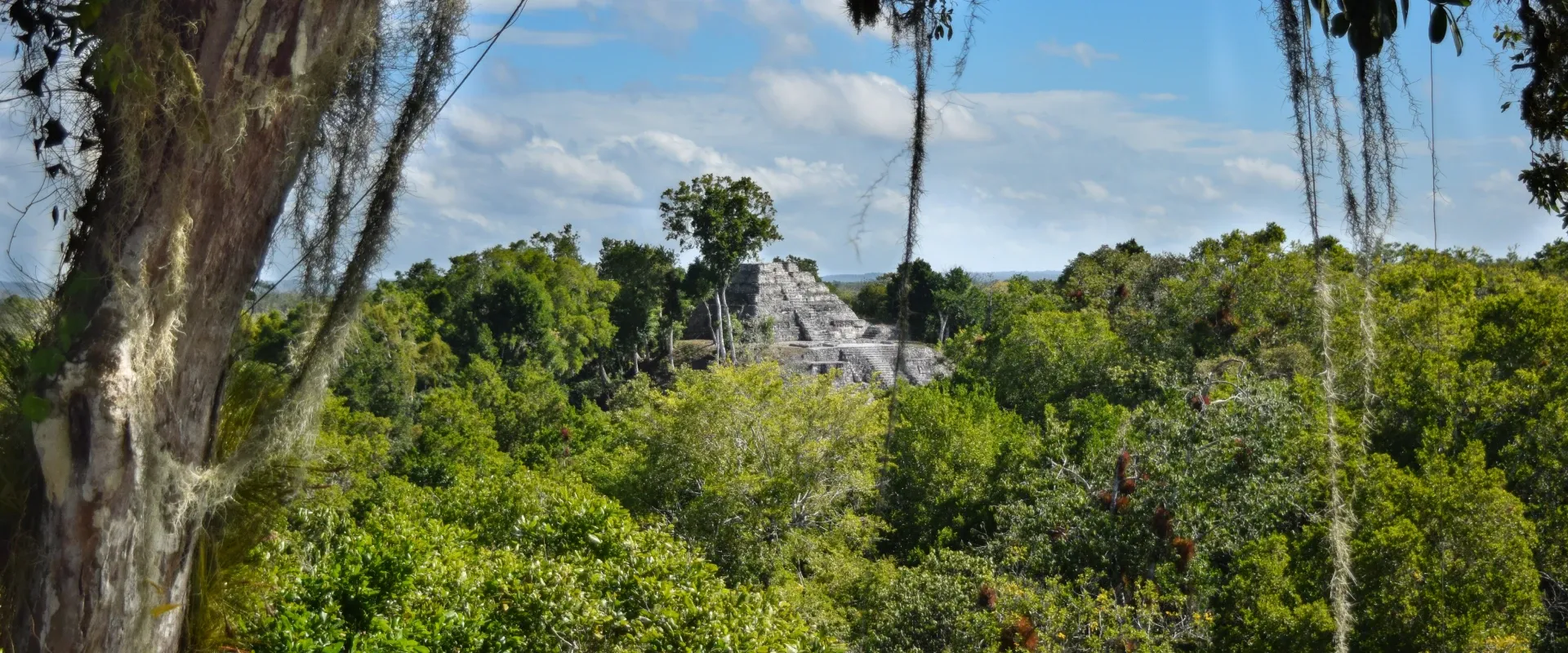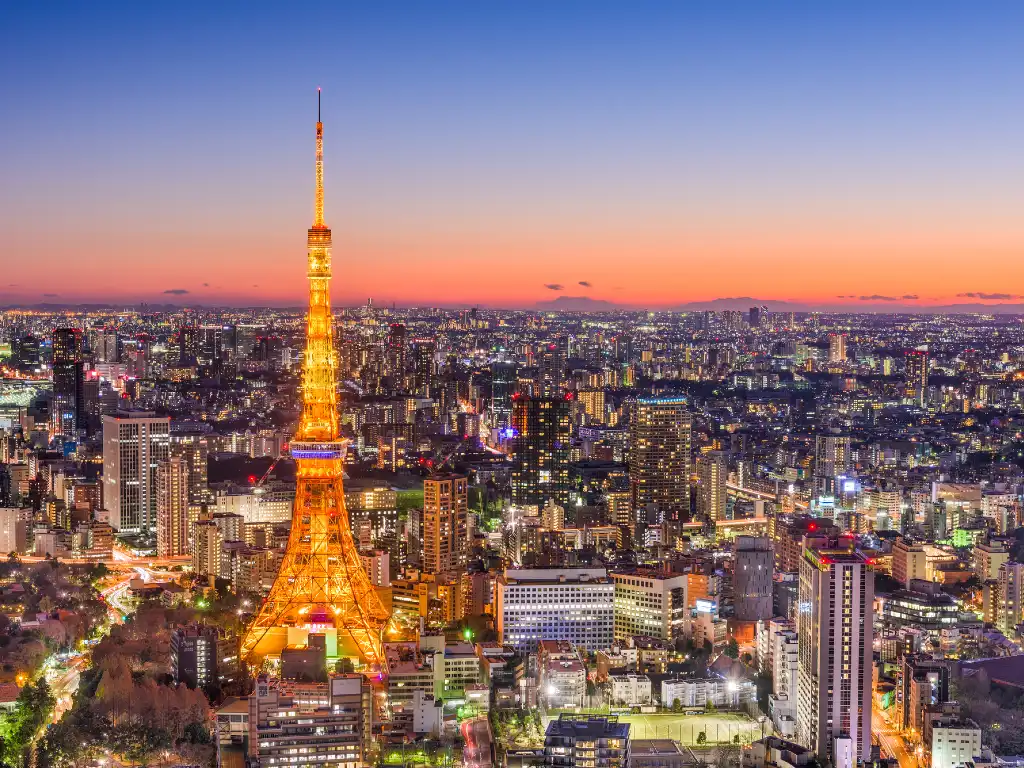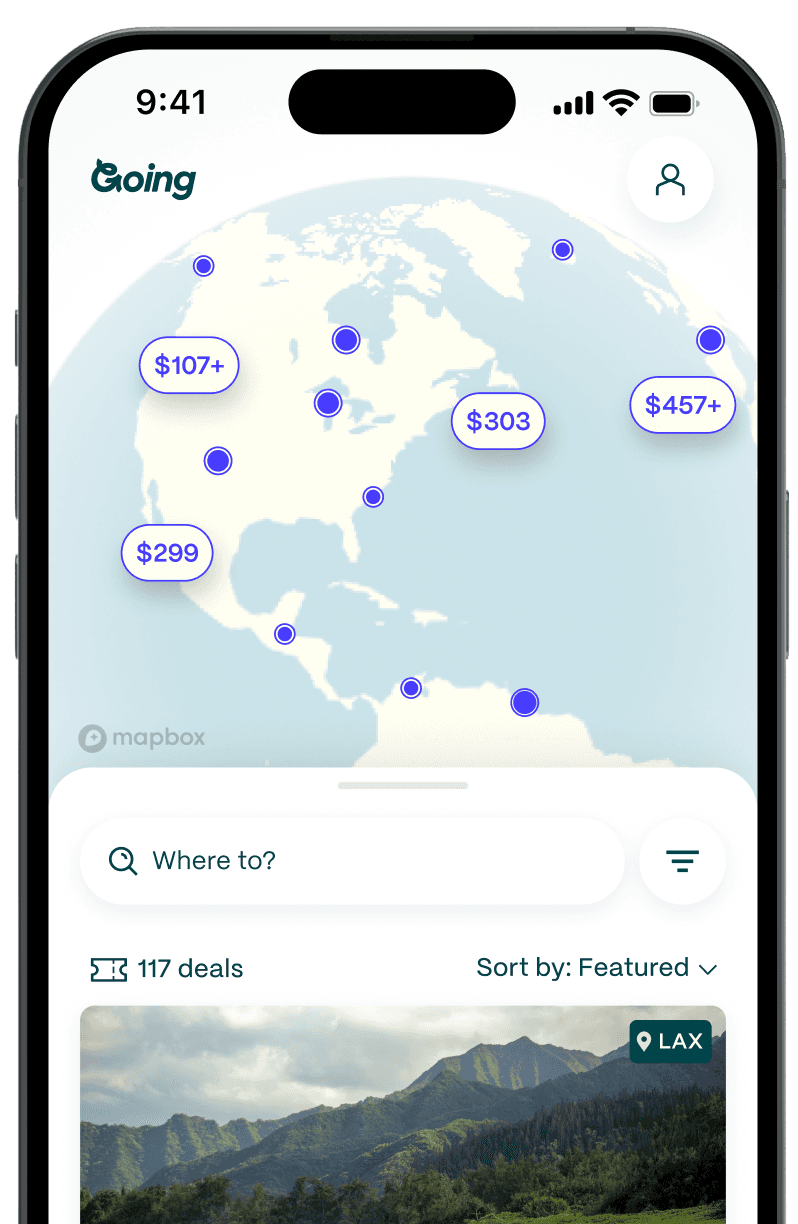
El Mirador: The 5-Day Guatemalan Trek to the Cradle of Maya Civilization
The guttural calls of howler monkeys rang out from the canopy above us as we traipsed along the base of the pyramid. When our guide made a small, surprised noise, I turned to see what he was holding out to me. It was a shard of something—the same shade as the stones but clearly formed by human hands. “Un plato de Maya,” he said with a grin. Oh, right. Just a piece of an ancient Maya plate he had found on the rainforest floor.
We climbed the steps carved into the side of the El Tintal pyramid, up and above the treeline to reveal a cloudless pink sunset. Another trekker shrieked excitedly, her binoculars trained on the trees below us where a group of keel-billed toucans were preening with their multicolored beaks.
That’s when our guide motioned to a small triangular hump at the horizon: La Danta, the Maya pyramid that’s more massive (in volume, not height) than the Pyramid of Giza, merely a speck in the distance. It marked the site of Guatemala’s El Mirador ruins, only accessible by foot or helicopter.
To get there, we had opted for the former, a five-day guided trek covering about 70 miles through the Maya Biosphere Reserve. Only a few thousand people a year make the trek to see the ruins that upended our modern understanding of Maya civilization. By examining the techniques used to build El Mirador, archaeologists realized in 1983 that the ruins were home to the first state-level societies throughout the Western Hemisphere, initially formed in the 6th century BCE—1,000 years before we had previously thought.

El Mirador isn’t just the cradle of Maya civilization. It’s also home to over 200 animal species, many of which are threatened or endangered, including jaguars, tapirs, and the beautiful ocellated turkey, which our guide lovingly called “el rey de pavos,” or “the king of turkeys.”
Tours through El Mirador are solely operated by the Carmelita Cooperative, formed in 1998 to conserve the local area and disperse resources throughout the small rural community. Tour operators pick trekkers up in the quaint lake town of Flores and drive them to where the road ends in Carmelita, the start of the five-day journey.

After a hot and humid hike along a mercifully flat trail, we reached our first camp in the mid-afternoon. We considered ourselves lucky: Travelers visiting in the rainy season, which runs from July to November, can take hours longer to slog through mud as deep as your waist. These are the “bajos,” or seasonal swamps, that made it possible for the Maya people to farm the crops that fueled their civilization thousands of years ago.
The camps are charmingly sufficient. Tents are perennially set up under tin roofs to shield from the sun and rain alongside hammocks for lounging. The few pit toilets and bucket showers are adequate enough for freshening up after a long day of hiking.

Day two of the hike takes visitors to the crown jewel of the trek: the vast ruins of El Mirador we had spied from Tintal. On the way there, trekkers walk along the sacbe, an ancient Maya causeway that still sits several meters above the lowlands. Reaching El Mirador in the late afternoon, we were rewarded with another incredible sunset, this time from the El Tigre pyramid. Here, archaeologists once found skeletons with obsidian arrow points lodged in their rib cages high up on the pyramid, from battles that would’ve taken place over 2,000 years ago.
The third day was the highlight of the trip. Our guide showed us around the expansive remains of El Mirador—from carved stones where archaeologists theorize children were ceremonially sacrificed, to ancient ball courts used for recreational sports. Visitors get to peek into active dig sites, where some carvings still being excavated are shielded from the public with foam pads.
The ruins raise more questions than they do answers—there is still so much we don’t know about El Mirador and the people who lived there. Whenever someone from our small group asked our guide one of these sorts of questions, he’d give us a cheeky, “quién sabe?”—“who knows?”

On our last night in El Mirador, we climbed to the top of La Danta for our grandest sunset yet. Amidst the chatter of our group and the shared warmth of the cheap Guatemalan tequila we passed around, the atmosphere hummed with a sense of wonder. It was a moment where time seemed to stand still, surrounded by the echoes of an ancient civilization that once thrived with an estimated 200,000 people.
Gazing out over the vast expanse of the jungle, I couldn’t help but think about the treasures yet to be unearthed all around us. As the sun dipped below the horizon, the mysteries of El Mirador seemed to whisper in the evening breeze, just waiting for someone to discover them.
Getting there
- The nearest airport to El Mirador is Mundo Maya International Airport (FRS) in Flores, Guatemala, though most travelers will enter the country through La Aurora International Airport (GUA) in Guatemala City. To get from Guatemala City to Flores, you can take a short regional flight or bus transfer. The Carmelita Cooperative picks hikers up from Flores and takes them to the start of the trek, which is about three hours away in Carmelita.
- Average Going price for cheap flights to Guatemala City: $295 roundtrip
$650
How to do it
- Best time to go: The best time to visit El Mirador is in the dry season, between December and June. From July to November, the rainy season plunges 35% of the trail under water and mud, which makes for both a greater physical and mental challenge. Travelers can book the tour 365 days a year, even holidays.
- Cost: The tour costs about $370 USD (2,900 GTQ) if you book directly through Carmelita Cooperative for the most popular tour of 5 days/4 nights. If you opt for a longer tour or book through hotels and agencies in Flores, you can expect to pay more. It costs an extra $192 USD (1,500 GTQ) for an English-speaking guide. Gratuity is not included.
- Tips & considerations: All tours include a local Spanish-speaking guide, cook, and mule driver who carries your heavier bags during the trip. You will be responsible for carrying your day bag, including your water. The meals are tasty and filling, but extra snacks are recommended. Don’t forget bug spray and sunscreen, no matter the season you go. Toilet paper and hand sanitizer are also recommended, as communal supplies are limited.
Other adventurous experiences around the world
Last updated September 10, 2024
Articles you might like
View All
Where to Stay in Tokyo: The Best Neighborhoods and Hotels in 2026
Dec 19, 2025
12 min read

Where To Stay in Seattle: Best Neighborhoods and Hotels for 2026
Dec 19, 2025
10 min read

Where To Stay in San Francisco: Best Neighborhoods and Hotels for 2026
Dec 19, 2025
17 min read






